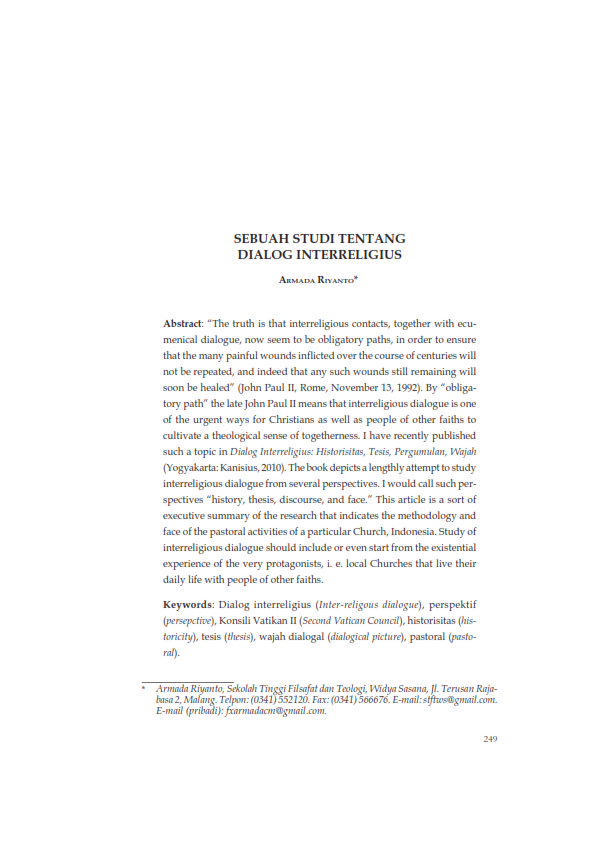Sebuah Studi Tentang Dialog Interreligius
Abstract
Abstract: “The truth is that interreligious contacts, together with ecu- menical dialogue, now seem to be obligatory paths, in order to ensure that the many painful wounds inflicted over the course of centuries will not be repeated, and indeed that any such wounds still remaining will soon be healed” (John Paul II, Rome, November 13, 1992). By “obliga- tory path” the late John Paul II means that interreligious dialogue is one of the urgent ways for Christians as well as people of other faiths to cultivate a theological sense of togetherness. I have recently published such a topic in Dialog Interreligius: Historisitas, Tesis, Pergumulan, Wajah (Yogyakarta: Kanisius, 2010). The book depicts a lengthly attempt to study interreligious dialogue from several perspectives. I would call such per- spectives “history, thesis, discourse, and face.” This article is a sort of executive summary of the research that indicates the methodology and face of the pastoral activities of a particular Church, Indonesia. Study of interreligious dialogue should include or even start from the existential experience of the very protagonists, i. e. local Churches that live their daily life with people of other faiths.
Keywords: Dialog interreligius (Inter-religous dialogue), perspektif (persepctive), Konsili Vatikan II (Second Vatican Council), historisitas (his- toricity), tesis (thesis), wajah dialogal (dialogical picture), pastoral (pastoral).

DISKURSUS applies the Creative Commons license (CC BY). We allow readers to read, download, copy, distribute, print, search, or link to the full texts of its articles and allow readers to use them for any other lawful purpose. The author must be aware that the article copyrights will be fully transferred to DISKURSUS if the article is accepted to be published in the journal. Once the manuscript has been published, authors are allowed to use their published article under DISKURSUS copyrights. Full information about CC BY can be found here: https://creativecommons.org/licenses/by/4.0/












